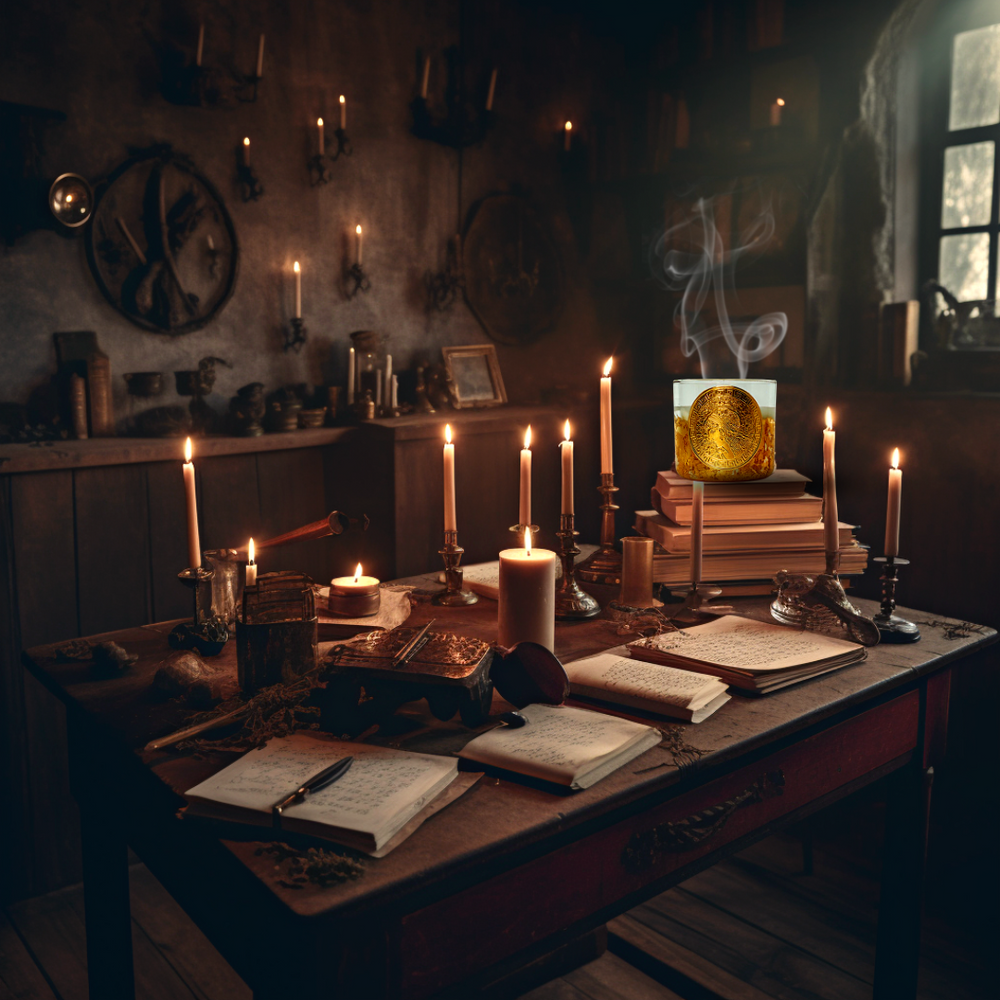Exploring the Sensory History of the Declaration of Independence
In the annals of American history, few documents hold as much significance and reverence as the Declaration of Independence. While we often focus on the profound words and philosophical concepts encapsulated within its text, we rarely pause to consider the sensory elements that the Founders encountered when the Declaration was forged in the early summer of 1776.

Depicts the moment on June 28, 1776, when the first draft of the Declaration of Independence was presented to the Second Continental Congress. Artist: John Trumbull, 1826
Focusing on select sensory elements surrounding the creation of the Declaration—specifically, the olfactive elements present at Independence Hall in 1776—we invite you to step back in time and unlock the sensory secrets of the Declaration of Independence, taking you on a remarkable journey back to America's infancy.
We were honored to collaborate with Drs. Aubrey Paris and Emily Black, creators of the popular National Treasure Hunt podcast and authors of National Treasure Hunt: One Step Short of Crazy (Tucker DS Press, 2023).
The KLEIO and National Treasure Hunt teams set out to create an interpretation of the sensory history of the drafting of the Declaration of Independence. Through research and contextual analysis, we discovered that a few specific olfactive elements were likely present at the time of its creation. The In Congress, July 4, 1776 luxury candle invites you back to Independence Hall as the Committee of Five worked feverishly in the early summer months to write the most famous break-up letter in history. In addition to the scent of parchment paper, on which drafts were written on, there were likely beeswax and bayberry candles burning in the background, an alternative to the less aromatically appealing and inefficient tallow candles of the day. Additionally, Thomas Jefferson's mahogany work desk was a vital supporting device as he drafted:
"In Congress, July 4, 1776. The unanimous Declaration of the thirteen united States of America..."
PARCHMENT PAPER
Parchment, which is made of animal skin, has traditionally been used instead of paper for important documents such as religious texts, public laws, indentures, and land records due to its material stability. The five pages of the U.S. Constitution, as well as the Declaration of Independence, the Bill of Rights, and the Articles of Confederation, are written on parchment.
The terms parchment and vellum are also used in the paper making industry. Parchment paper is made from cellulose fibers prepared from fir trees or plants such as cotton or flax. Paper that mimics the thickness and smooth surface of parchment is also created.
At KLEIO, we used the aroma of parchment paper to recreate the sensory history of the drafting of the Declaration, on which the Committee of Five worked tirelessly for three weeks.
BEESWAX AND BAYBERRY CANDLES
Before electricity, colonial America was illuminated by candlelight. From burning resin and pine tar to fatwood and tallow, the art and science of candlemaking was a part of everyday life in the eighteenth century. The average colonial family burned between 300 to 400 candles per year.

While candles made from animal fat were relatively inexpensive, tallow candles burned poorly and emitted an unpleasant smell. However, there were a few pleasing alternatives in use at the time. Heated beeswax, which was pressed around a wick and shaped by hand, soon became more common throughout colonial America. And the aroma produced was much more appealing. Limited quantities, however, made these candles expensive, reducing their use to the church and upper crust of society.

Another source of fuel for candles that burned bright—with the benefit of a lovely smell—were the fruits of the bayberry shrub. Wax from boiled bayberries provided not only a pleasant fragrance, but it also emitted little smoke and did not melt in the heat of the summer months. A plentiful and renewable resource, these waxy berries were found throughout the colonies.
However, like beeswax variants, a bayberry candle was more expensive. One pound of bayberry wax required fifteen pounds of bayberries. Therefore, a quart and a half of bayberries yielded only enough wax for one small candle. The process of creating a candle was very time consuming. More affluent families might own small candle molds, which allowed the user to cast up to a dozen candles at once.

Over time, candle makers or chandlers, traveled among the colonies selling molds of various sizes to expedite the autumn tradition of candle making. In 1705, Robert Beverley wrote in his History and Present State of Virginia:
“Of this [bayberries] they make candles, which are never greasy to the touch, nor melt with lying in the hottest weather: Neither does the snuff of these ever offend the smell, like that of a tallow-candle; but instead of being disagreeable, if an accident puts a candle out, it yields a pleasant fragrant to all that are in the room; insomuch that nice people often put them out, on purpose to have the incense of their expiring snuff.”
Bayberry candles were a treasure to the colonists who often saved them to burn on special occasions. A letter to John Winthrop in 1712 read:
“I am now to beg one favor of you – that you secure for me all the bayberry wax you can possibly put your hands on. You must take a care they do not put too much tallow among it, being a custom and cheat they have got.”
A luxury item to be saved and relished, it became a tradition to burn bayberry candles on Christmas or New Year's Eve to bring blessings of abundance in the coming year. The presentation of bayberry candles was a thoughtful gift that expressed one’s desire to share joy, happiness, good luck, and prosperity:
“A bayberry candle burned to the socket, brings joy to the heart and gold to the pocket.”
MAHOGANY DESKS
Would you believe that mahogany desks were considered the "laptops" of their time? Always on the go, the Founders waged their war of words from mahogany mobile devices. Within the political history collections at the Smithsonian’s National Museum of American History are three important artifacts: the portable writing boxes of Thomas Jefferson, George Washington, and Alexander Hamilton.

Declaration of Independence Mahogany Desk, National Museum of American History
The 18th-century writing box, also known as a dispatch case, portable desk, and writing case, would have been an important object for the traveling Founder to own. Like the laptops and mobile devices of today, a writing box provided its owner a base from which to communicate, even when on the move. For Jefferson, Washington, and Hamilton, who were often required to work while away from the fully stocked desks in their homes and who were constantly writing letters or essays, the ability to travel with a small box containing the most essential items from a writing desk was crucial.
Jefferson’s writing box is small and light, made of a beautiful mahogany with satinwood inlay. The top is a hinged board that can be propped up as a bookstand or unfolded to twice its size to become a writing surface. It was on this desk while away from home as a delegate to the Second Continental Congress that he drafted one of the seminal documents of our nation: the Declaration of Independence.
"Politics as well as Religion has its superstitions. These, gaining strength with time, may, one day, give imaginary value to this relic, for its association with the birth of the Great Charter of our Independence,” wrote Jefferson in the affidavit he attached to his writing box.




